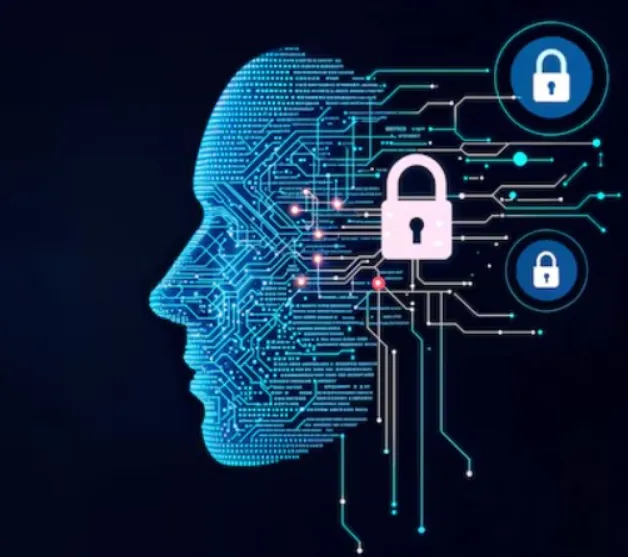The role of Chief Information Security Officers (CISOs) has drastically evolved over the years. Today, it’s not enough for these leaders to simply be security experts. In a world increasingly driven by AI, they must also be strategic business leaders, risk assessors, data ethicists, and change makers.
Historically, CISOs were primarily focused on tasks like conducting phishing tests, handling incidents, and ensuring cybersecurity protocols were followed. But as digital transformation accelerates, their responsibilities have expanded to encompass much broader duties—guiding organizational strategy in an AI-powered environment. The growing influence of artificial intelligence in cybersecurity is not only reshaping how security is practiced but also redefining the role of the CISO in the process.
From Reactive to Proactive: The Evolution of the CISO Role
In the past, the CISO’s role was largely reactive—focused on responding to threats and managing security incidents. But that’s changing. A new era is emerging in which AI is playing an integral role in shaping how businesses approach cybersecurity, and in turn, how CISOs lead those efforts. This evolution is reflected in what’s being called the transition from CISO 2.0 to CISO 3.0.
The CISO 2.0 model was largely about managing a secure perimeter and responding to incidents as they occurred. However, this model is no longer sufficient in today’s fast-moving digital landscape. Enter CISO 3.0: a more strategic, forward-thinking role that enables security leaders to align AI investments with broader business objectives. Now, CISOs are not only security experts but also business enablers, helping to steer the organization’s digital strategy while managing risks in an AI-driven world.
AI in Cybersecurity: The Game Changer
The incorporation of AI into cybersecurity is having a transformative impact on day-to-day security operations. With AI tools, security teams can analyze traffic patterns, detect threats more quickly, and respond to incidents before they escalate. For example, AI can automate threat detection and offer actionable insights in real time, reducing the time spent manually reviewing data and allowing teams to act in minutes instead of hours.
In large, global organizations, AI platforms can aggregate threat intelligence from external sources and compare it to internal data, providing a clearer understanding of vulnerabilities and pinpointing what needs immediate attention. This “single pane of glass” approach to security offers CISOs unprecedented visibility, empowering them to anticipate threats and take proactive measures rather than simply reacting to incidents after they’ve occurred.
Take the example of a retail company using AI to detect unusual login patterns across its global user base. Rather than manually combing through logs hours or days after the event, AI allows them to address suspicious activity in real time, significantly improving the company’s identity and access management (IAM) posture.
AI’s Role in Addressing the Cybersecurity Talent Shortage
The rapid advancement of AI in cybersecurity isn’t just enhancing tools; it’s also transforming the way organizations address the cybersecurity talent gap. Personalized, AI-powered learning platforms are revolutionizing training programs by identifying skill gaps at an individual level. These platforms offer adaptive learning experiences tailored to different learning styles, such as short microlearning modules, VR-based simulations, and gamified assessments. These innovations make upskilling more efficient and engaging, helping security teams stay ahead of the curve.
AI tools can also analyze performance data to identify knowledge gaps across teams, enabling CISOs to target training efforts where they are most needed. This ensures that every investment in employee development translates into measurable improvements in security capabilities.
However, upskilling alone isn’t enough. As AI becomes more autonomous, the role of the CISO is shifting from purely operational to more ethical and strategic. It’s no longer about just using AI to improve efficiency; it’s about knowing when human judgment should come into play, especially when dealing with legal, governance, or ethical considerations. CISOs must find the right balance between automation and oversight, ensuring AI is used responsibly while still empowering teams to act quickly and effectively.
Leading with Strategy in an AI-Driven Threat Landscape
The rise of AI-powered cyberattacks means that traditional manual defenses are no longer sufficient to keep up. To stay ahead, organizations need more than just advanced tools—they need security leaders who can translate technological advancements into business value and risk management.
The most successful CISOs today are not simply implementing new AI platforms but are also developing internal AI governance frameworks. These frameworks align AI initiatives with the broader business strategy and ensure that security decisions are made with a clear understanding of their impact on the organization. By collaborating across departments and fostering an organizational culture of security, these leaders are able to drive transformation safely.
As digital infrastructures become more complex, spanning hybrid environments, remote workforces, and interconnected ecosystems, AI offers a path toward greater cohesion. But that path must be guided with clarity and intent. The CISO must act as the bridge between technology, risk, and business outcomes, ensuring that all aspects of security are aligned with organizational goals.
The Future of CISO Leadership: Embracing Change
The evolution to CISO 3.0 is already happening. Next-generation AI tools are developing at a rapid pace, and this trend is expected to continue. The organizations that thrive in this environment will be those where security leadership evolves in step with technological advances.
CISO 3.0 is not just a theoretical future—it’s here now. For those who are ready to embrace it, AI isn’t just a tool; it’s the driving force behind the next generation of security leadership. This new role empowers CISOs to not only protect their organizations but also to shape their future, driving digital transformation with confidence and strategic foresight.







